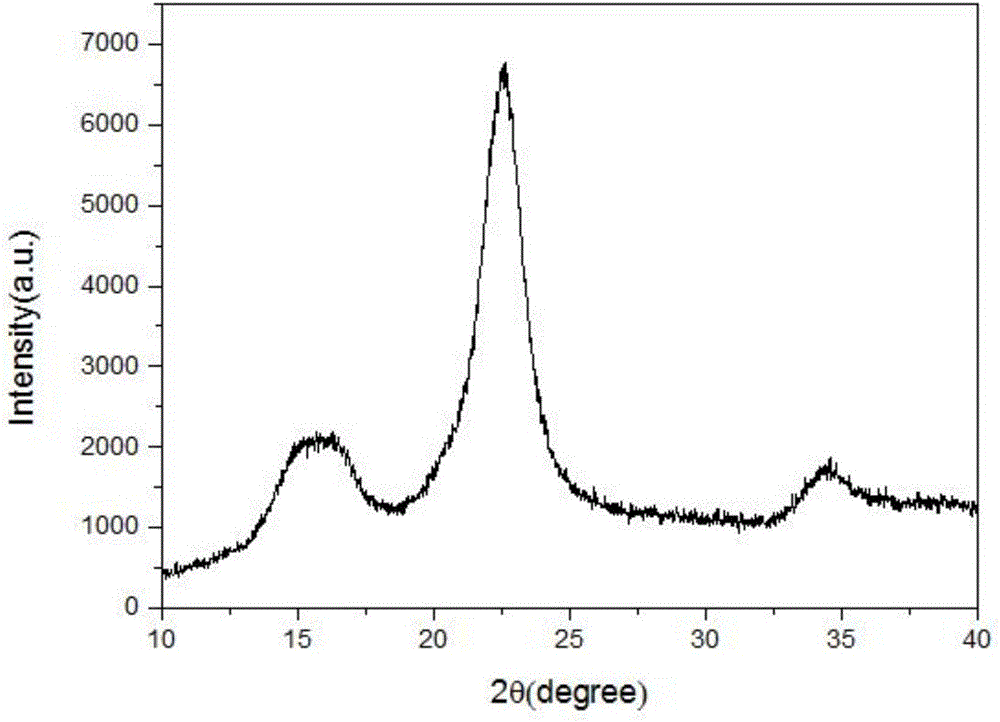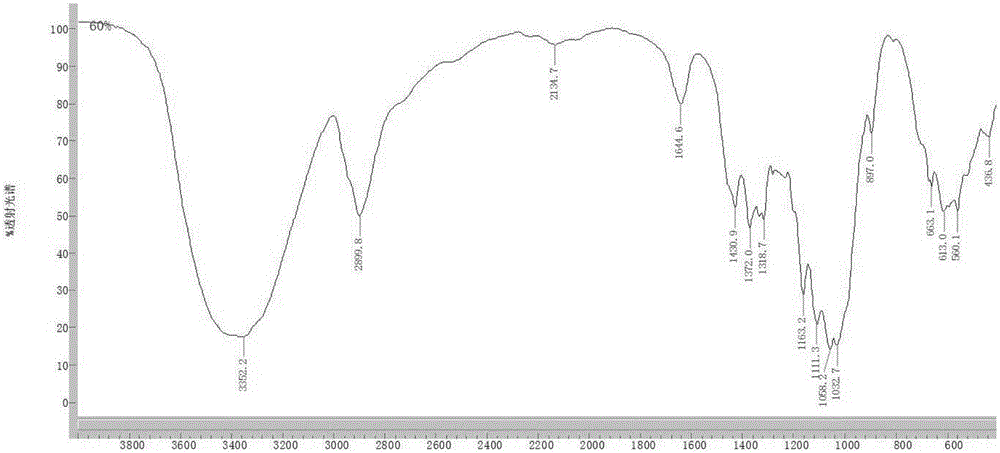Method for extracting cellulose nanofiber from Humulus stems
A nanofiber and cellulose technology, applied in fiber raw materials, fiber raw material processing, textiles and papermaking, etc., can solve the problems of increasing the amount of pretreatment chemicals, the difficulty of waste liquid treatment, and unfavorable environmental protection, so as to promote the progress of subsequent reactions , beneficial to the removal effect, beneficial to the removal effect
- Summary
- Abstract
- Description
- Claims
- Application Information
AI Technical Summary
Problems solved by technology
Method used
Image
Examples
specific Embodiment approach 1
[0042] (1) Cutting and crushing: remove the leaves of Humulus japonicus and leave only the stems, cut them into short branches with a length of 15-20 cm, put them in an oven to dry, and then crush them with a pulverizer, and collect Humulus japonicus that passed through a 18-mesh (<1mm) sieve The stem powder is ready for use, and the diameter of the humulus stem powder (Humulus powder) is less than 0.85 mm.
[0043] (2) Acid-base treatment to remove pectin wax: weigh the Humulus japonicus powder obtained in step (1) and the concentration is 0.4% to 0.8% (WT%) hydrochloric acid aqueous solution in a mass ratio of 1:10 to 20, and Humulus japonicus The powder and the hydrochloric acid aqueous solution are placed in a high-temperature and high-pressure reactor, and the temperature is kept at 120°C, the pressure is 0.4Mpa, and the stirring speed is 900-1200rpm for 0.8-1.5h. Then adjust the pH value to 8.5-9.5 with 1 mol / L sodium hydroxide solution, stir at room temperature for 12-1...
specific Embodiment approach 2
[0049] The difference between this embodiment and specific embodiment 1 is that the high temperature and high pressure reaction temperature in steps (2), (3) and (4) is 140° C. and the pressure is 0.53 MPa.
specific Embodiment approach 3
[0050] The difference between this embodiment and specific embodiments 1 and 2 is that the high temperature and high pressure reaction temperature in steps (2), (3) and (4) is 160° C. and the pressure is 0.7 MPa.
PUM
| Property | Measurement | Unit |
|---|---|---|
| Diameter | aaaaa | aaaaa |
Abstract
Description
Claims
Application Information
 Login to View More
Login to View More - R&D
- Intellectual Property
- Life Sciences
- Materials
- Tech Scout
- Unparalleled Data Quality
- Higher Quality Content
- 60% Fewer Hallucinations
Browse by: Latest US Patents, China's latest patents, Technical Efficacy Thesaurus, Application Domain, Technology Topic, Popular Technical Reports.
© 2025 PatSnap. All rights reserved.Legal|Privacy policy|Modern Slavery Act Transparency Statement|Sitemap|About US| Contact US: help@patsnap.com



